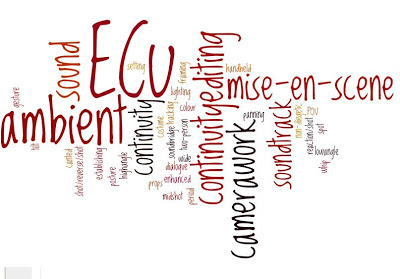The Avengers (Joss Whedon, 2012) illustrates the importance of a range of digital technology for the film industry and its audiences.
Its conception depended on digital technology
The Avengers is solely owned, distributed and marketed by Disney, one of the 'Big Six' Hollywood megafranchises. Hollywood is renowned for producing blockbusters with strong narratives, often part of a sequel, usually with larger than life characters, using exciting, complex sets often in exotic or extravagant locations and reaping the benefits of an interconnected web of companies which all promote the film as a package of products. Dalecki (2008) referred to this package of values as the '4-S Megafranchise model' comprised of synergy, sequelization, story and spectacle. This film exemplifies the blockbuster's use of archetypes, for example, heroic figures (and the characters have been around for more than half a century in 500 comic book issues) in 'a save-the-world story everyone's seen time and again' (The Hollywood Reporter).
Films like these use a wide range of digital media to attract and address their audiences, starting with prior knowledge that the sophisticated digital technology required for CGI, digital film, digital distribution techniques and so on will be met by comfortable studio budgets and recouped via box office returns, DVD and Blu-Ray income, film music sales and merchandising tie-ins, to name but a few revenue streams. Therefore digital sophistication is a prior 'given' for this type of Hollywood film.
Its production values depended on digital technology
The Avengers is a good example of such a film that used digital media from conception to consumption. It was shot using digital cameras, such as the Arri Alexa and also the Canon EOS digital SLR. Whedon wanted 'a very visceral and naturalistic quality to the image': "We wanted this to
feel immersive and did not want a 'comic book look' that might distance
an audience with the engagement of the film". They used "as much aerial work in as possible for the audience to see the big
expanses, the wide establishing shots, while also making sure that the
effects work doesn't look too computer generated". Industrial Light and Magic (ILM) digitally recreated the vast majority of the New York cityscape used in the film and sent out a team of four photographers to take pictures of the area in a shoot that lasted 8 weeks.
The Avengers contains more than 2,200 visual effects shots completed by 14 companies. The film's key effects included the Helicarrier
, the New York cityscape, digital body doubles,
Iron Man and the Hulk. To create the on-screen Hulk, Ruffalo performed
in a motion-capture suit on set with the other actors while four
motion-capture HD cameras (two full body, two focused on his face)
captured his face and body movements.
Jeff White, ILM's visual effects supervisor, said, "We really wanted to
utilize everything we've developed the last 10 years and make it a
pretty spectacular Hulk. One of the great design decisions was to
incorporate Mark Ruffalo into the look of him. So, much of Hulk is based
on Ruffalo and his performance, not only in motion capture and on set,
but down to his eyes, his teeth, and his tongue."
Its distribution depended on digital technology
Disney dismissed all three of Marvel's marketing top men to bring their functions in-house. The trailer, which debuted exclusively on
iTunes Movie Trailers, was downloaded over 10 million times in its first 24 hours, breaking the website's record for the most-viewed trailer. A second full-length trailer was released on iTunes in February 2012, reaching a record 13.7 million downloads in 24 hours.The theatrical trailers of
The Avengers appeared with many films, including
Mission Impossible - Ghost Protocol, 21 Jump Street and
The Hunger Games.
Not all marketing was digitally driven; the build-up to
The Avengers drew on retail partnerships, such as product tie-ins and Disney issued two limited edition comic book series. Synergy is illustrated by its wide range of retail partnerships. In total Marvel and its parent-company Disney secured an estimated $100 million in worldwide marketing support for
The Avengers. So not all marketing was digitally driven; the build-up to
The Avengers drew on retail partnerships, such as product tie-ins: set photos of Tony Stark (Robert Downey Jr.) were released driving a new model Acura car. Marvel partnered with JADS, a fragrance company, to promote
The Avengers with character-based fragrances. The announcement was just ahead of the Toy Industry Association's annual exhibition, where representatives held a sampling booth of the products. Other promotional partners included Dr Pepper, Harley Davidson, Hershey chocolates, Land O'Frost lunchmeats, Oracle, Red Baron pizza, Symantec, Visa and Wyndham Hotels. Disney does not generally promote through fast food outlets.
Its exhibition depended on digital technology
Disney announced that
The Avengers would be digitally remastered for IMAX 3D and opened in IMAX theaters on May 4, 2012, the same day it opened in regular theaters. The IMAX release of
The Avengers follows Marvel's release of
Iron Man 2 and
Thor on IMAX screens. The final battle sequence is an extravaganza in Manhattan, so the height and vertical scale of the buildings is really important.
It became the highest-grossing comic-book adaptation, superhero genre film, and release by Walt Disney Studios. It became the highest grossing US film of 2012 and the highest-grossing superhero film in the UK.
The Avengers was released by
Walt Disney Studios Home Entertainment on
Blu-ray,
Blu-ray 3D,
DVD and
digital download in the United States and in various international markets. A video game based on the film was planned for concurrent release. The game was to be a
first-person shooter/
brawler for the
Xbox 360,
PlayStation 3,
Wii U, and
Microsoft Windows but was later cancelled.
.




